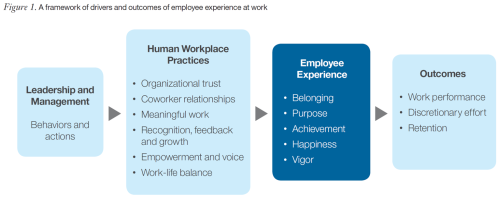
The competitive world of HR Conferences may be changing forever. And that’s not a bad thing, in my opinion. Innovation is happening in this space – from stronger SHRM state conference offerings, to an additional HR technology-related conference (HR Tech World) being introduced in the U.S,, to other new entries – all designed to disrupt the usual HR conference offerings and deliver greater value to attendees.
The best example of this is the WorkHuman conference, held last month in Phoenix. With well over 1,700 attendees and almost no corporate sponsors (except for the organizer, Globoforce), the focus was on engaging, useful, envelope-edge pushing content and nurturing/inspiring attendee experiences. Described as “the Woodstock for HR” by Globoforce CEO, Eric Mosley, WorkHuman isn’t our parents’ HR conference. Heck, it isn’t even our HR conference.
Re-certification credit opportunities abounded, but the focus of WorkHuman – unlike many of the really large HR conferences – was on the attendee experience. From early morning yoga and runs or walks, to healthy snack breaks, to half-hour content blocks (how many one-hour sessions can you attend in a two-day conference?), to lobby-area snackable content presentations, to blockbuster keynote speakers: this conference is changing how HR does conferences and I see its impact on almost every other HR-related conference I attend.
It’s true that I advised the organizers on their first two conferences, but I came as an attendee this year and was thrilled to see that, despite its rapid growth (year one: 300+ attendees; year two: 600+ attendees), its focus on engaging the full human attendee has not wavered. Any time you get more than 1,500 conference attendees, the organizers tend to focus on 1) logistics, 2) schedules, and 3) sponsors/exhibitors. The people who attend become “blocks” that need to be moved around, That hasn’t happened at WorkHuman. Attendees arrive as humans and leave as engaged and inspired humans.
- Logistics
While the conference space was large, every thought was given to the humanity of the attendees. One didn’t need to walk far to get a drink of water. The signage was easily read. The venue provided rooms of appropriate size located in close proximity for the audiences – so that session sampling was possible. The “center aisle” held snack stations, a “spotlight” stage with indoor amphitheater seating for shorter more informal presentations, comfortable chairs for congregating and conversations, info stations, and cheerful, easily identified staff to answer questions and provide directions. It’s clear that the attendee was not relegated to “steerage” status at WorkHuman. They were front and center at all times.
- Schedules
It’s true that activities started very early – but the early agenda entries were healthy and focused on strengthening the body as well as the mind, as opposed to cramming in more re-cert credits. Starting a conference day with yoga or a group run followed by a healthy breakfast seems a smart way to start a day of learning, regeneration, and inspiration.
- Sponsors/exhibitors
The short description is that there weren’t any. Well, outside of Globoforce, the conference organizer. It’s a rather remarkable conference experience, to be focused on new ideas, on new connections, and new ways of leading rather than being sold by vendors at every step of the way. Don’t get me wrong: I’m not anti-sponsor/exhibitor. This is just a new way of organizing. It is fitting for a conference focused on bringing humanity into our everyday organizational life to create an exhibitor-free experience. It makes sense. As the conference gets bigger and bigger, it may make business sense to bring on a few selected sponsors, but don’t look for a major exhibition hall any time soon. Attendees take away value far greater than cheap exhibitor tchotchkes at WorkHuman.
Globoforce upends the usual HR conference calculus. By investing in the WorkHuman movement, by engaging the most current speakers and content, by prioritizing the attendee experience as the most important component of an HR conference, the WorkHuman team has created – and strengthened – one of the most compelling business conference events currently available.
Next year’s conference will be in Austin, TX (April 3-5) and keynoter Brené Brown has already been announced. I hope I see you there!






